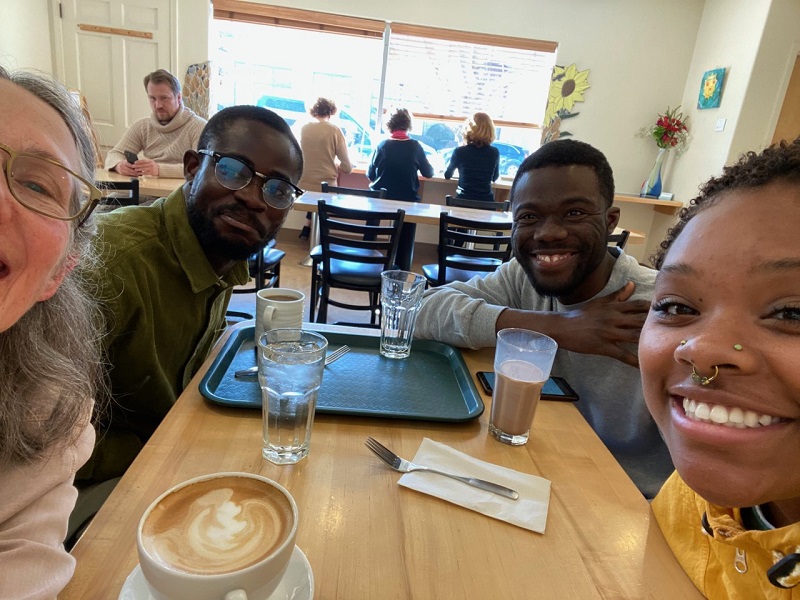
We spent last Saturday afternoon hunting down a barn.
Not just any barn. This was the barn where Gordon Parks shot a pivotal scene for his autobiographical movie, The Learning Tree, made on location in his hometown of Fort Scott.
In the scene in question, young Newt, played by actor Kyle Johnson, hides in a hayloft and witnesses a brutal crime, about which he will later testify in court.

Newt in the hayloft

Newt in the doorway of the barn

Newt in the doorway of the barn, with the farmhouse in the distance. The farmhouse still stands today along with the barn.
The Learning Tree was released in 1969, the first major Hollywood production to be directed by an African American. On its fiftieth anniversary, Kirk Sharp, Director of the Gordon Parks Museum at Fort Scott, embarked on an ambitious project to mark the shooting locations with commemorative signs, blazing a “Learning Tree Trail” throughout Bourbon County. “When I grew up, we never heard of Gordon Parks,” said Sharp, a Fort Scott native. Thanks to his efforts, the same will never be said of future generations of Fort Scotters.
Some of the locations were obvious: the high school, where Newt loses his girlfriend Arcella to the dastardly Chauncey, has been renovated beyond recognition since 1969, but the retaining wall is the same, as is the little store across the street. Harder to pinpoint was the exact location in the Marmaton River where Newt and his friends fish out a dead body, or the lonely railroad crossing where he helps his blind Uncle Rob reach home. Relying on the recollections of crew members and townspeople, and his own extensive knowledge of the territory, Sharp was able to confirm these locations. But he had to travel miles along unpaved backroads before he found the elusive barn.
Sharp shared his adventures with me and students from this spring’s graduate seminar in African American film on February 25. We stood on a dusty crossroads that, fifty years earlier, had been jammed with camera crews, actors, caterers and production assistants. When Sharp finally found the barn, he got chills. “Even the nails in the boards matched the still photos from the movie,” he told us, as a friendly farm dog sniffed our pant legs. He elaborated that when he sent a picture of the barn to actor Kyle Johnson, the confirmation was swift: “It’s like it was yesterday,” Johnson wrote of his 50-year memory.
For those of us who have studied The Learning Tree, Kirk Sharp’s generous private tour was a real-life lesson in the challenges of location scouting, not to mention the magic of editing. As we returned to the priceless collection of art and artifacts in the Gordon Parks Museum, we reflected on what we also learned about the loving, detailed work of archiving and honoring this groundbreaking movie, one of the first to be inducted by the Library of Congress into the National Film Registry.



Master’s student Stephen Antwi summed it up over a celebratory lunch: “An amazing experience.”
— Katy Karlin, Professor of English
